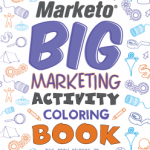In my previous post about How to Read and Summarize a 20-Page Research Report in 20 Minutes, I showed how to skim through a complex document and gather essential information to use in summarizing the material for a business audience. Now let’s build our summary from the material we highlighted.
We start by going back through the document we marked up earlier (it’s embedded in the previous post) and copying and pasting each highlighted section into a new document. Organize each element under one of the categories you used when marking up the document (for example, Key Point, Take Away, Summary Trend and New Insight). The result looks something like the document embedded below.
Then we plug our highlighted information into an “inverted pyramid” template. Inverted pyramid is an organizational technique that was invented many years ago in the newspaper industry when space was finite and stories often had to be cut at the last minute. Inverted pyramid dictates that information is presented in order of declining importance. That way, if the story needs to be cut to one paragraph at the last minute, the key points are still preserved.
You don’t hear much about inverted pyramid anymore because length isn’t an issue online, but it’s a very reader-friendly way to present information to time-pressed people. That makes it a good technique to use in business writing.
Just the Facts? No
A good summary does more than just relate facts, though. It also provides context for why the facts are important and filles in background information that helps the reader understand how this new information moves their understanding forward. Here’s a typical example from an Aug. 1 AP story:
The number of Americans applying for unemployment benefits fell 19,000 last week to a seasonally adjusted 326,000, the fewest since January 2008. The decline shows the job market continues to strengthen.
The Labor Department said Thursday that the less volatile four-week average slid 4,500 to 345,750. The July figures are typically volatile as the government has a difficult time adjusting for seasonal layoffs in the auto industry.
Still, the trend in weekly unemployment claims has been positive and offered hope that a better job market could help lift a sluggish economy later this year.
Look to this model when summarizing content. Your outline might look like this:
| Paragraph 1 | Key Point Important Data 1 Key Takeaway |
| Paragraph 2 | Important Data 2 New Insight |
| Paragraph 3 | Callout or Quote |
| Paragraph 4 | Important Data 3 |
| Paragraph 5 | Important Data 4 Potential Gotcha or Summary Recommendations |
Each paragraph should ideally introduce new data that moves the story forward. After you’ve introduced two or three new data points, step back and offer context for what you’ve just said. The exception is the middle of the summary, where the quote typically appears. Quotes shouldn’t be random or perfunctory. They should comment upon the data and insights already presented.
Putting It All Together
By dragging and dropping the highlighted information into this outline and then rewriting for consistency, we come up with this summary:
New research finds that midsize businesses are applying the same principles as big companies to extracting untapped value from data both inside and outside the organization. They are also motivated by the same goal as their corporate counterparts: to create a competitive advantage. The research challenges common perceptions that only big companies have the scale and computing power to realize the opportunity of “Big Data.”
A survey of more than 1,100 business and IT professionals in 95 countries – nearly half of which are midmarket businesses – also suggests that data quality is an important variable in the effective use of big data analytics. Researchers suggest that a fourth “V” – veracity – be added to the “three Vs” of big data that are commonly accepted. They include volume, variety and velocity.
“’Veracity emphasizes the importance of addressing and managing for the uncertainty inherent within some types of data,” the researchers say. Acknowledging that there is no such thing as perfectly clean data, they recommend that “the need to acknowledge and plan for uncertainty is a dimension of big data that has been introduced as executives seek to better understand the uncertain world around them.”
Customer-centered objectives are the principal drivers of big data projects, the research revealed. Other frequently mentioned goals include operational optimization, risk/financial management, employee collaboration and enabling new business models.
In order to get the most from big data, companies of all sizes need a scalable infrastructure and strong analytics. Even then, most are struggling to find the skills needed to analyze the deluge of unstructured data like voice, video and conversations in social media.
Note the third sentence in the first paragraph, which states that the research challenges conventional wisdom. This is an attention-getter. Whenever you can counter commonly held perceptions, you have a good chance of grabbing the audience’s attention.
Note the third sentence in the first paragraph, which states that the research challenges conventional wisdom. This is an attention-getter. Whenever you can counter commonly held perceptions, you have a good chance of grabbing the audience’s attention.
Paragraphs one, two and four primarily introduce new information. Paragraphs three and five step back and provide context. Again, this is a cadence that readers are comfortable with.
This is just one of many ways to write a business summary, but it’s a reliable one. It uses a cadence that’s familiar to most people and gets across the key points of the research in declining order of importance.
Next we’ll talk about writing headlines for different audiences.




